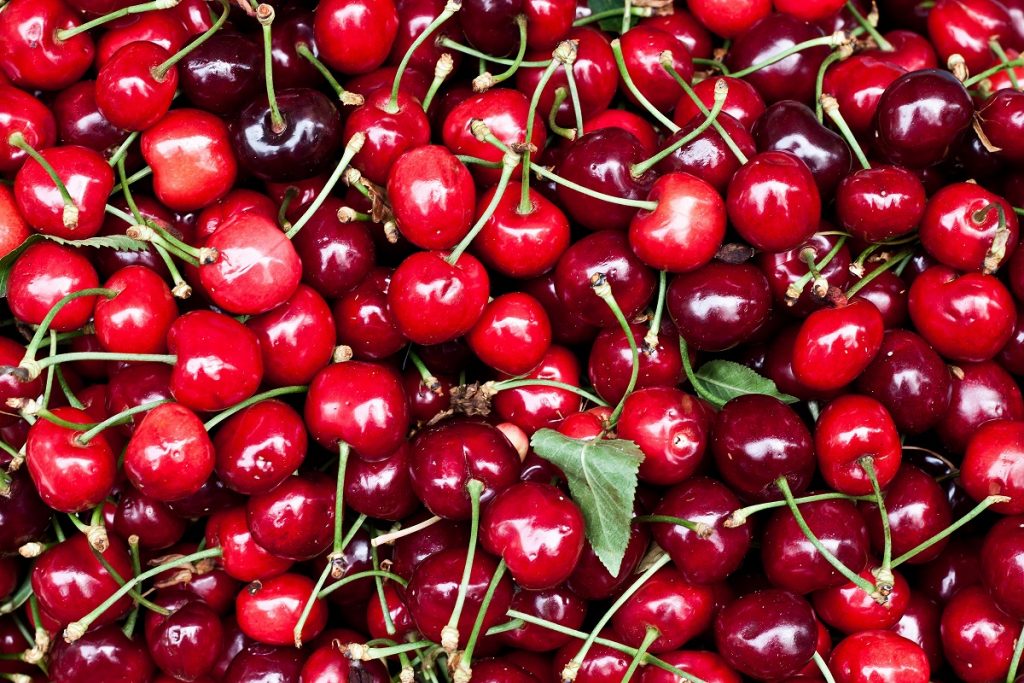Everything To Do With Cherries | Facts About Cherries | Top 10

The clocks went forward a few months ago, signifying the start of something that all British people long for; Summer! Although the weather has not been particularly kind to us (what’s up with that?)
Cherries are really only in season for a short amount of time, for about 4 months between June and September, so they don’t spend much time in our markets. However, when they do come into season, boy do they come in big, red and juicy!
Cherries are smaller fruits than most others. They are almost perfectly round and smooth. They range from a deep purple/black to a bright red colour, with a thin and (relatively) long green stem which most people use as a kind of “fork” to eat the fruit, then toss to the side afterwards. The colour is an indication of what the fruit will taste like; the purple/black ones tend to be sweeter, and the brighter red ones lean toward the sour/acidic side. Their small size makes these fruits relatively hassle-free to eat, with the exception of a small pit that can be disposed of easily. Cherries aren’t just eaten as they are, they can be used in a variety of other ways, from jams to cakes!
So, we get that Cherries look good, they taste good, and they’re used in a bunch of other stuff, but what do they do for our bodies? Cherries actually provide quite a few health benefits, since they contain a range of vitamins and minerals! Cherries are quite rich in Vitamin C and Potassium. Vitamin C is important to maintaining the strength of your immune system and the health of your skin. Potassium on the other hand is needed to help with muscle contractions, your nerve function and to regulate your blood pressure.
Furthermore, Cherries are rich in antioxidants and have anti-inflammatory compounds. Oxidative stress is something that is linked to several chronic diseases and premature ageing, and Antioxidants fight against this process.
Finally, Cherries are stock-full of a plant chemical called polyphenols, which help fight against cellular damage, reduce inflammation and promote your overall health. A polyphenol-rich diet has links to protecting a lot of chronic conditions, from diabetes, some cancers, mental decline and also heart disease!
Cherries originate from Western Asia/Eastern Europe, and it was the Greeks that were the first to cultivate cherries. Shortly after, the Romans took the torch and carried on increasing and expanding the production of these sweet little fruits.
Cherries are farmed in Orchards in straight-rows. Cherries are not self-pollinating, so pollination is important in order for them to reproduce, with honey bees being the main pollinator. Once the orchard is planted, one can expect to wait about 6 years until the first major crop can be harvested. A key indication as to when the cherry is ready to be harvested is when the colour changes. Often Cherries can be harvested by hand, leaving the stems in-tact. They are then taken to a packing facility to be packed and distributed to the markets where they have patiently waiting cherry-lovers to gobble them up.

 Free delivery to selected areas!
Free delivery to selected areas!


















Comments